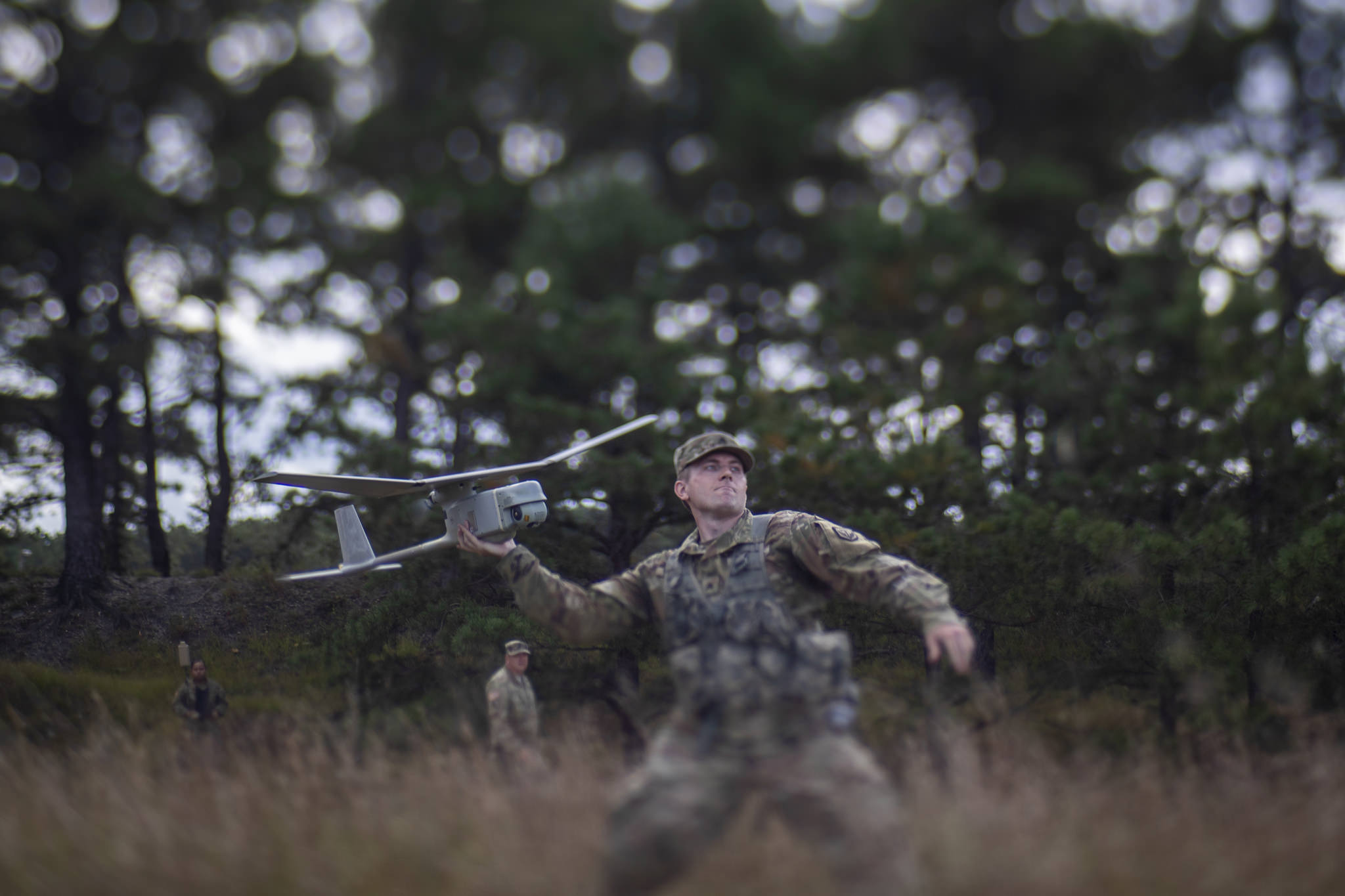Defense Department’s Replicator program must increase its speed
The Defense Department will need to pick up the pace and look for funding for Replicator if it wants to utilize the innovations and advantages of the program...
The U.S. should take a lesson from Ukraine to innovate and deploy technology fast or potentially miss the boat, according to several witnesses at a House Armed Services subcommittee hearing on the Defense Department’s Replicator program, which aims to scale drones within the next two years.
Replicator pulls on lessons from Ukraine, who uses large numbers of cheap drones to deter Russia and inform its decisions. The panelists agreed that using this technique could help the Defense Department create operational dilemmas for adversaries. The witnesses agreed that Ukraine is a good example of what can be done when quickly deploying commercial drones and other technologies, but they questioned Replicator’s ability to copy this success in part because of red tape.
“What we’re seeing there is that the proliferation of commercial technology is influencing an agile acquirer and the Ukrainians are being very agile in this and pulling together various commercial technologies to achieve military significant means,” Bill Greenwalt, nonresident senior fellow at American Enterprise Institute, said. “The lessons learned that we should be taking from there is that the commercial marketplace is maybe lightyears ahead of where the Department of Defense is and we need to figure out how to be agile and bring that in and then bring the unique military knowledge that we have to bear on that commercial attack. And that is going to be a process that moves against the Department of Defense’s culture.”
Bryan Clark, senior fellow at Hudson Institute, said that part of Ukraine’s success is not from the number of drones, but rather how it’s using the drones.
“It’s how they orchestrate, how they organize themselves, how they use the tactics that the unmanned systems enable, how they employ those tactics in the field, how they basically sequence their operations,” Clark said. “So, it’s a lot of the kind of operational art that they’re bringing to bear that’s actually yielding success, rather than just throwing a bunch of mass at the wall and hoping that the Russians get overwhelmed. I think the lesson there is we got to figure out ways to enable our unmanned systems to be employed in a very flexible way that tactical operators can then adjust in the field.”
Paul Scharre, executive vice president and director of studies at Center for New American Security, said that Ukraine has been successful with its decentralized acquisition approach. While this can make maintenance hard because of the variety of drones in the fleet, there are advantages.
“One of the advantages of what they’re doing is not only can they then scale through that direction, but they do a lot of experimentation in the technology and then how it’s being used because they’re allowing a lot of freedom among those on the front lines and the developers to try things and figure out what works,” Scharre said.
Rep. Seth Moulton, D-Mass., said that comparing Replicator to what Ukraine has done should be a metric for how successful the initiative is.
Replicator is a Defense Department initiative with a goal to “field attritable autonomous systems at scale of multiple thousands, in multiple domains, within the next 18-to-24 months” and serve as an innovation playbook. The initiative — announced in August — will use “existing funding, existing programming lines and existing authorities to accelerate production and delivery at scale.”
It is designed to help deter China and overcome its mass by having the U.S. innovate and deter by using lots of small, smart and cheap platforms.
Leveraging commercial technology will be important to advance this initiative to produce at scale and use the latest technologies.
The witnesses agreed that to solve some of the challenges of Replicator, the initiative needs funding, a sense of urgency to speed up its innovation, to be agile and deploy quickly at scale as well as a culture shift within DoD.
For example, Greenwalt said Replicator should be taken outside of the acquisition and budget bureaucracy and rules to help it succeed. Furthermore, it needs agile acquisition and budgeting practices and should utilize other transaction authorities.
Clark said that Replicator should pursue adaptability and not focus on mass. The Defense Department should try to reduce its predictability and this initiative is one way to do that. Specifically, Replicator should focus on operational innovation and improve the way it does analysis, he said
Replicator needs to integrate with the defense industrial base and to ramp up drone production. It should leverage commercial technologies, according to Greenwalt. Echoing this point, Clark said that the DoD needs to show its interest and investment in drones as a signal to the industrial base to increase production.
“DoD’s investment in unmanned systems have been pretty anemic, which has led industry to sort of back off and keep their powder dry waiting to see if that demand is going to start to manifest,” Clark said. “As a result, we don’t have an industrial base right now to draw upon to scale at the type of pace that Replicator is envisioning, so it’s going to take some time to make that happen even if we take advantage of emerging technologies for manufacturing.”
Clark said the U.S. needs to increase its prototyping tempo to assess solutions and change the solutions over time. Scharre made a similar point about the need for an increased prototyping pace.
Clark said that if Replicator is being put to the test, there are several things the Defense Department would need to do.
“We need to quickly get the operators to define how they intend to solve this problem, how would they go about tackling, (or) stopping the invasion, and I think it’d be a combination of slowing down the invasion with unmanned systems that are going to create the hellscape that Adm. Paparo talks about and then the joint fires network that’s going to be used to then eliminate those ships before they’re able to get combat power ashore,” Clark said. “So that’s the basic construct, what I need is the money to be able to go rapidly buy a bunch of unmanned systems…and I need to sustain the investment in the munitions production that’s going to get me those missiles to be able to eliminate the problem once they’ve been slowed down.”
Greenwalt said the initiative should focus on “three things: money, production lines at full capacity and how to deliver these.”
Scharre said that funding and integration are critical. Specifically, there will need to be “flexible money, lots of it,” he said. “And the department’s going to need to have a very tightly integrated system of experimenting with these systems to figure out how do you use them effectively? And then what are the upgrades you need? We see in wartime that that cycle is measured in weeks and months. So we have these very quick innovation cycles.”
Several witnesses expressed concern about competition for budget resources and that Replicator could take funding away from other important projects.
Cyber, information technologies and innovation subcommittee leaders Mike Gallagher (R-Wis.) and Ro Khanna (D-Calif.) urged Defense Department leadership, such as Deputy Secretary of Defense Kathleen Hicks — who oversees the initiative — to testify about the program.
Copyright © 2025 Federal News Network. All rights reserved. This website is not intended for users located within the European Economic Area.
Kirsten Errick covers the Defense Department for Federal News Network. She previously reported on federal technology for Nextgov on topics ranging from space to the federal tech workforce. She has a Master’s in Journalism from Georgetown University and a B.A. in Communication from Villanova University.
Follow @kerrickWFED






